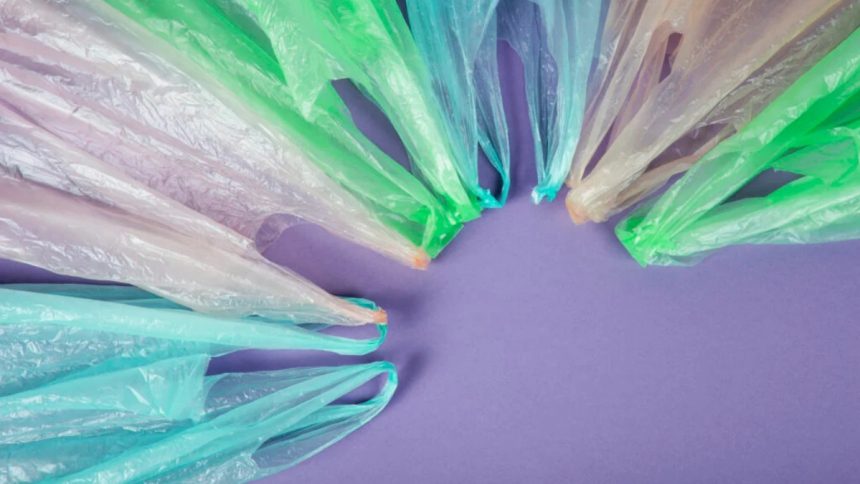Polythene, commonly referred to as plastic, is often criticized for being environmentally unfriendly. However, many of the assumptions about polythene are inaccurate or outdated. This article will debunk some of the major misconceptions related to polythene’s recyclability, biodegradability, manufacturing process, and proper disposal. We will provide facts and data to disprove these common polythene myths that prevail despite advances in material science and waste management.
Misconception 1: Polythene is not recyclable
A widespread belief holds that polythene is non-recyclable. This idea is far from the truth. The reality is that a significant portion of polythene products can be recycled, challenging the perception of polythene as an environmental adversary.
Polythene materials, including the lightweight bags used in supermarkets, the wrapping around consumer goods, and rigid containers, are indeed recyclable. Advances in recycling technologies have made it possible to reclaim and repurpose these materials efficiently. For example, the recycling rates for polythene have seen a steady increase globally. While the exact figures vary by region, many countries report recycling rates of over 30%, a number that continues to grow as awareness and technology improves.
The recycling process for polythene can be categorised into two main types: mechanical and chemical. Mechanical recycling involves physically processing the waste polythene into new materials. This process typically includes collecting, sorting, cleaning, shredding, and melting the polythene, then reforming it into pellets that can be used to manufacture new products. On the other hand, chemical recycling breaks down polythene to its molecular level, allowing it to be reconstructed as a completely new polymer. This method is particularly promising for handling mixed or contaminated polythene waste that is challenging to recycle mechanically.
Both mechanical and chemical recycling processes offer viable paths to mitigate the environmental impact of polythene waste, demonstrating the material’s recyclability. As recycling technologies continue to evolve and become more widely implemented, the potential for increasing polythene’s recycling rates is significant, further debunking the myth that polythene is inherently non-recyclable.
Misconception 2: Polythene Products Cannot Biodegrade
The belief that polythene products are incapable of biodegradation contributes to their negative environmental image. Contrary to this common misconception, there are specific types of polythene designed to biodegrade under the right conditions.
Biodegradable polythene varieties, such as oxo-biodegradable and hydro-biodegradable plastics, have been developed to address the issue of longevity in natural environments. Oxo-biodegradable polythene, for instance, is engineered to break down when exposed to UV light or heat, catalyzing the degradation process into smaller, bio-assimilable fragments over time. Hydro-biodegradable polythene, on the other hand, is designed to decompose through the action of moisture and naturally occurring microorganisms.
The biodegradation of these polythene types is influenced by several factors, including exposure to UV light, temperature, and the presence of microorganisms. For example, oxo-biodegradable plastics can start to break down within a few months under optimal conditions, although complete degradation into biomass, water, and carbon dioxide might take a few years. Hydro-biodegradable plastics’ degradation rate is heavily dependent on moisture levels and microbial activity, with some products designed to degrade in as little as six months in industrial composting facilities.
It’s important to note that while biodegradable polythene offers a promising avenue for reducing plastic waste, the effectiveness of biodegradation varies based on environmental conditions and the specific type of biodegradable polythene used.
Misconception 3: Polythene Production Releases Dangerous Greenhouse Gases
A prevalent concern regarding polythene is its production process, which is often assumed to significantly contribute to the release of dangerous greenhouse gases (GHGs). However, this perspective fails to account for the innovations and improvements in polythene manufacturing that have been made to reduce its environmental footprint.
Recent advancements in polythene production have focused on minimizing GHG emissions. For instance, the integration of catalysts that require lower energy inputs and the utilization of renewable energy sources in manufacturing processes have significantly reduced the carbon footprint associated with polythene production. Additionally, some companies have begun incorporating recycled polythene content into new products.
Misconception 4: Reusable Bags are Always Better than Polythene Bags
The narrative that reusable bags are unequivocally more environmentally friendly than polythene bags simplifies a complex issue. While reusable bags can indeed reduce waste and resource consumption over their lifetimes, certain scenarios and factors can tilt the balance in favor of polythene bags from an environmental perspective.
One such scenario involves the frequency and manner of use. Polythene bags, often criticized for their single-use nature, can be less impactful on the environment when reused multiple times and properly recycled at the end of their lifecycle. In contrast, the environmental benefit of reusable bags, such as those made from cotton or heavy-duty plastics, is contingent upon repeated use many times over. Studies suggest that a cotton bag might need to be used hundreds of times to offset its higher initial environmental impact, which includes water usage and carbon footprint in production.
Moreover, the downsides of reusable bags extend beyond their production impact. The energy and resources required to clean and maintain these bags, especially those made from materials requiring high-temperature washing, can further diminish their environmental advantages.
Misconception 5: All Polythene Ends Up in Landfills and Oceans
The assumption that all polythene waste inevitably finds its way into landfills and oceans overlooks significant efforts and advancements in waste management and recycling practices. While it’s undeniable that plastic pollution is a pressing environmental issue, the fate of polythene is not uniformly dire.
Efficient waste management systems and recycling initiatives play a crucial role in diverting polythene from landfills and marine environments. Many communities worldwide have established collection programs specifically designed for polythene products, facilitating their recycling and reuse. Additionally, public awareness campaigns and policies aimed at reducing single-use plastics have contributed to more responsible consumer behaviour and an increase in recycling rates.
The prevention of polythene pollution also hinges on improving recycling solutions. Innovations in recycling technology, such as enhanced sorting systems and chemical recycling methods, offer promising avenues for increasing the recyclability of polythene. These advancements not only extend the life cycle of polythene materials but also reduce the need for virgin resources.
To further combat polythene pollution, stakeholders across the value chain — from manufacturers to consumers — can support efforts to develop and implement more effective collection and recycling frameworks. By participating in or advocating for such initiatives, individuals and organizations can contribute to a significant reduction in polythene waste.
Lynn Martelli is an editor at Readability. She received her MFA in Creative Writing from Antioch University and has worked as an editor for over 10 years. Lynn has edited a wide variety of books, including fiction, non-fiction, memoirs, and more. In her free time, Lynn enjoys reading, writing, and spending time with her family and friends.















